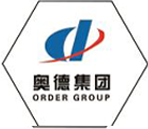
Dec . 21, 2024 23:37
Back to list
gas coalescer
Understanding Gas Coalescers Function and Importance
Gas coalescers are essential devices used in various industries to purify gases by removing unwanted liquids. Particularly valuable in natural gas processing and petrochemical applications, gas coalescers play a critical role in improving the efficiency and safety of operations involving gas transmission and handling.
What is a Gas Coalescer?
A gas coalescer is a filtration device that works by removing suspended droplets of liquid from a gaseous fluid. It operates on the principle of coalescence, where small droplets amalgamate to form larger droplets, which can then be easily removed from the gas stream. The core components of a gas coalescer include filter elements that capture these liquid droplets, allowing clean gas to flow through while simultaneously retaining contaminants.
How it Works
The functionality of a gas coalescer can be broken down into several key stages
1. Inlet Stage The incoming gas, often containing particulate matter and moisture, enters the coalescer unit through the inlet. 2. Filtration The gas passes through the filter media, where the small liquid droplets suspended in the gas collide with the filter fibers. As the droplets collide, they merge or coalesce into larger droplets.
3. Separation These larger droplets are then gravitationally separated from the gas stream. Relying on the force of gravity, the heavier droplets settle at the bottom of the coalescer unit, where they can be drained off.
4. Outlet Stage Once the gas has been stripped of its liquid contaminants, it exits the coalescer clean and dry, ready for further processing or transport.
Applications of Gas Coalescers
Gas coalescers find application in a variety of industries, including
gas coalescer

- Oil and Gas In natural gas processing plants, coalescers remove liquid hydrocarbon and water from gas streams to prevent corrosion and hydrate formation in pipelines. - Chemical Manufacturing Coalescers help maintain the quality of gases needed in chemical processes by ensuring that only clean gases are used.
- Power Generation In gas turbines, coalescers play a vital role in preventing water and particulates from damaging turbine blades and other critical components.
- Environmental Protection Gas coalescers are also employed in pollution control applications, helping to remove harmful contaminants from emissions before they are released into the atmosphere.
Benefits of Using Gas Coalescers
The integration of gas coalescers into industrial processes offers numerous benefits
- Enhanced Efficiency By ensuring that the gas is free of liquid contaminants, coalescers improve the overall efficiency of systems that depend on clean gas.
- Preventive Maintenance Regular use of gas coalescers can reduce wear and tear on equipment downstream, leading to less frequent maintenance and lower operational costs.
- Safety Improvements By removing liquids that could lead to dangerous situations like explosions or equipment failure, coalescers contribute to a safer working environment.
- Regulatory Compliance Many industries face stringent environmental regulations that necessitate the use of filtration systems. Gas coalescers help companies meet these standards, reducing legal risks and promoting corporate responsibility.
Conclusion
In conclusion, gas coalescers are indispensable in various industrial applications where clean gas is paramount. Their ability to effectively remove liquid contaminants not only enhances operational efficiency but also promotes safety and environmental compliance. As industries continue to evolve and face new challenges, the importance of reliable technologies like gas coalescers will only grow, solidifying their role in modern industrial operations.
Latest news
-
Safety Valve Spring-Loaded Design Overpressure ProtectionNewsJul.25,2025
-
Precision Voltage Regulator AC5 Accuracy Grade PerformanceNewsJul.25,2025
-
Natural Gas Pressure Regulating Skid Industrial Pipeline ApplicationsNewsJul.25,2025
-
Natural Gas Filter Stainless Steel Mesh Element DesignNewsJul.25,2025
-
Gas Pressure Regulator Valve Direct-Acting Spring-Loaded DesignNewsJul.25,2025
-
Decompression Equipment Multi-Stage Heat Exchange System DesignNewsJul.25,2025

